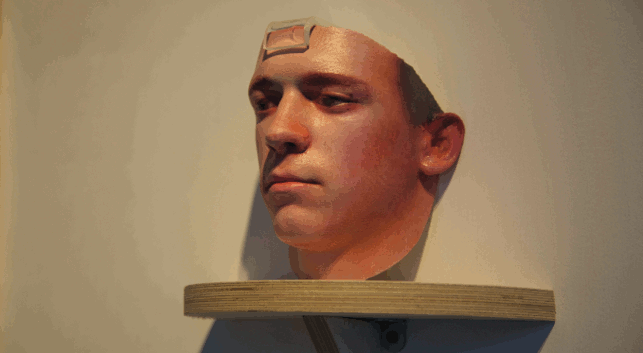Many a successful company has sprung from an idea doodled on a napkin or piece of paper. Compaq Computer Corporation (Hewlett-Packard), Apple and Ford, for instance. Now Mcor Technologies can be added to that list as twelve years ago a doodle by two Irish brothers led to the creation of a paper-based 3D printer.
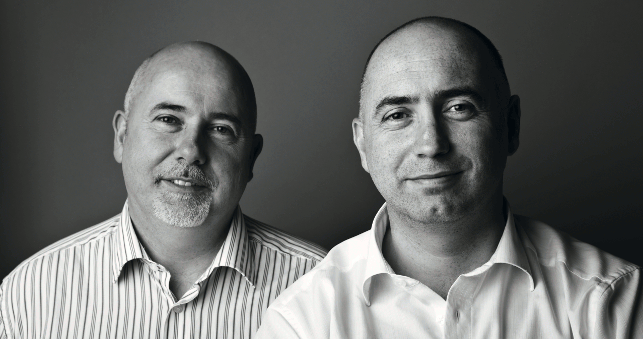
The two brothers behind Mcor Technologies – Fintan (left) and Dr. Conor MacCormack (right)
“To be honest, Fintan and myself are first class geeks,” laughs Dr. Conor MacCormack, the younger of the two.
“We used to, over the summers when we were younger and then in our spare time when we got older, keep notebooks and do brainstorming sessions together. We’d pick a problem and then we’d challenge ourselves to come up with a solution to fix it.”
Twelve years ago Fintan MacCormack was living in Philadelphia. A qualified aircraft mechanic he had moved there to study electrical engineering at Temple University. Having remained after his studies he was working at Kulicke and Soffa Industries, a wire bonding specialist in the semi-conductor industry.
Whereas Conor MacCormack had remained in Dublin where he gained a PhD in mechanical engineering from Trinity College. He was working at Airbus at the time on an A380 development programme.
Out of reach
Conor had come across 3D printing technology first at college and then at Airbus but realised that it was out of reach for many, not only because the machines were extortionately priced, but the running costs were through the roof.
So, the challenge the brothers set themselves was to come up with an accessible and affordable 3D printer.
“We asked ourselves ‘what if we could build a machine where the running costs were zero?’ And that became the goal,” says Conor.
To add to this technical challenge, they threw ecofriendliness into the mix too. “What we really wanted to do was upset the status quo by inventing a machine that everybody wanted to use,” he chuckles.
While most 3D printing technologies build models from expensive plastic or chemically infused powder, the brothers wanted to use ubiquitous A4 and letter office paper as the build material. “For us it was very important for people to lean over, pull a couple of reams of paper out of the photocopier or printer and stick it into a 3D printer.
“Also, my gut feeling of the industry at that time was that the majority of people were using 3D printing for prototyping. So early stage design review, form and fit, etc. If that is the case, material wasn’t really important.”
Challenge accepted
All of this was literally doodled and discussed one weekend during Christmas 2002 when Fintan was home for the holidays. Although, thousands of miles apart when he flew back to Philadelphia, they were still very much working on their technical challenge.
“I had a young child at the time and I’d come back from my regular job, put my child to bed and then start working. Fintan was five hours behind me and we would literally just work into the early hours,” remembers Conor.
“We used three to four different packages – one to do voice (this was pre-Skype of course), one to share a desktop and another to share a screen. So we could sketch on the screen and talk ideas through.”
Whilst Conor was working away on the mechanical design side, Fintan was occupied with the electrical and software side of their invention. “We got a board here and chips there to allow Fintan to solder and make the electronics in his apartment. We then shipped this off to Dublin and I did all the mechanical stuff,” explains Conor.
“I got the first prototype machine built in that first year. When people talk about in-house machines, it was in the front room of my house so quite literally in-house.”
As Conor puts it, they really dragged this machine into existence on their own as they went about solving all the various technical challenges. “There was no open source community like you have today, we basically had to build everything in the machine from scratch, which was hard at the start but it’s great now as we have this fully integrated solution that isn’t dependent on other technologies,” he says.
Year on year
Christmas 2003 and Fintan was back in Ireland where the two set about debugging the machine before he flew back to Philadelphia to continue their long distance (inventing) relationship.
By Christmas 2004 they had a machine that could print but it was half manual and half automatic with some components having to be moved by hand. “It was a real ‘Frankenstein’ of a machine,” smiles Conor.
Essentially what they had invented was selective deposition lamination (SDL). The SliceIT software would read the digital data, or STL, from the user’s PC and slice the computer model into printable layers equivalent in thickness to the paper. Meanwhile, a page is placed inside the machine’s build chamber, which acts as a base layer.
When ‘print’ is pressed, drops of water-based adhesive are applied selectively. In other words, a higher density is applied in the area that will become the part. A new sheet of paper is fed in and pressed down on the adhesive to bond the pages together.
The Tungsten carbide blade then cuts one sheet of paper at a time, tracing the object outline to create the edges of the part. The whole process starts again – new sheet fed in, adhesive applied, pressed together and cut (see diagram below).
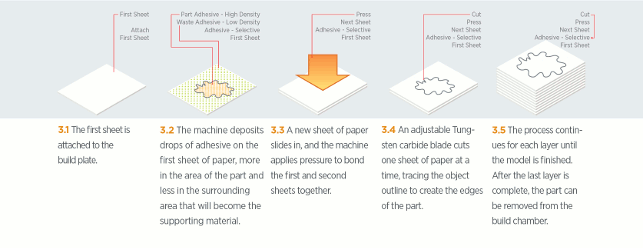
Once complete, the part can literally be excavated or ‘weeded’ from the surrounding support structure using nothing more sophisticated than common tweezers. No dipping is required and the support structure, being paper, can be put straight into the recycle bin. Though made of paper, the finished models are essentially laminated wood.
The brothers realised that they had something here but needed to know whether those in industry thought so too. So Conor’s wife, Deirdre MacCormack, with her background in marketing and advertising, carried out some market research in Ireland, UK and the US. The feedback was resoundingly positive.
Realising it wasn’t going to happen on a part time basis, in 2005 the brothers gave up their jobs and Fintan moved back to Dublin where they set up Mcor Technologies. They put all the money they managed to get, including investment from Enterprise Ireland, into one pool before locking themselves away in a small garage to work on developing their intellectual property.
“Fintan and I – maybe it’s because of all the years doing this brainstorming thing – we always have this belief in what we can do technically. So we knew we could solve the technical challenge but we never thought about the business side. For those two years we were purely looking at the technical challenge and that is what drove us.”
By 2007, however, they had run out of money and needed to get an investor onboard. By this time Deirdre began working for the company on a full time basis as chief marketing officer.
In order to get the investment they needed, she let the cat out of the bag and wrote a few press releases that not only led to column inches in various publications but also an interview slot on Irish TV.
“It just went crazy. I’ll never forget the three of us in the office hearing the ‘bing bing bing bing’ of emails as they were landing in our inbox. We had two million hits on our website in ten days and 1,800 sales enquiries globally.
“We were also approached by a private investor who said he’d rather lose his money to a business than lose it to the banks. Enterprise Ireland then came along at that point and they gave us some additional investment,” says Conor.
Final stretch
Now it was full steam ahead because although Mcor had market interest they needed to get the production machine finalised. But Conor realised that, as much as it needed to be a feat of engineering on the inside, it also had to be well designed and user friendly on the outside.
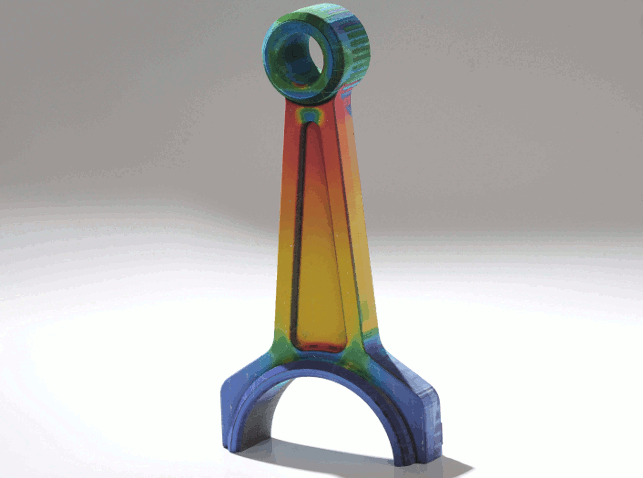
3D printing service bureau Williams 3D has been using the IRIS to print a range of affordable, full colour prototypes for clients
“I remember having a debate with Fintan about having tinted lexan in the windows when he thought regular clear perspex would work just as well. But I knew the lexan would look better and add value to the machine so went with that.”
In 2010 Mcor’s production machine Matrix began to roll out. By this time an investor in Silicon Valley had got wind of what they were working away at and provided further investment.
This enabled the pair to work on their next invention – a full colour 3D printer called IRIS. This machine requires an extra step from the monochrome one – pre-printing the colour outline of the part on each page using a modified 2D colour inkjet printer before they’re fed into the 3D printer.
Conor is quick to point out that IRIS delivers true colour, printing in more than one million colours simultaneously (CMYK, including black). The printed colour is also consistent with the colour on the user’s computer screen.
“Lots of machines claim to offer true colour but it’s really a blend. True full colour means that at any point and at any time during the build you need to be able to change from one colour to another.”
More in the pipeline
Shipping for just over one year now, the IRIS machine has made its home in many design studios (see box piece below), educational establishments and medical labs. In fact, this colour printer now accounts for 95 per cent of Mcor’s sales.
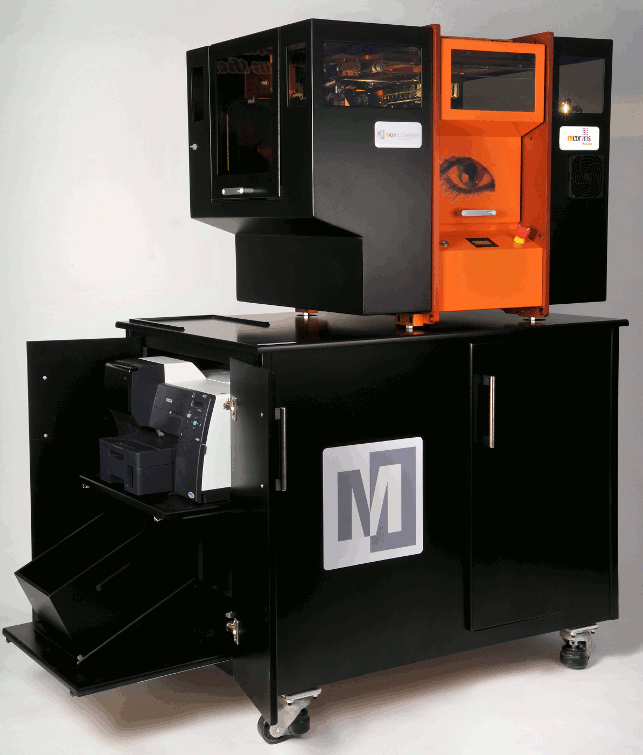
The Mcor IRIS pre-prints the colour outline of the part on each page using a modified 2D colour inkjet printer that sits in the IRIS stand
“But ultimately 3D printers are one of the tools in a tool box – there is not one 3D printer that can do everything even though the big companies will tell you that. But if low cost operation, high colour and eco-friendliness is important then our technology is for you,” says Conor.
Although it’s no longer just the two of them, the brothers are still doodling and are very much involved in coming up with new challenges to solve.
“Even though we are in full production, we see ourselves internally as an R&D company developing the next product. We currently have some really innovative groundbreaking stuff in the pipeline,” says Conor. Watch this space.
IRIS in action
Sydney-based 3D printing service bureau Williams 3D recently invested in an Mcor IRIS 3D printer.
The initial appeal for Wojciech Wawrzyniak, Williams 3D general manager, was cost as it enabled them to create more physical prototypes for clients early on in their product development processes.
“Multiple prototype drafts are especially valuable for models where form and feel are important, as in the shape of a kettle handle. Clients need to grip the design in their hand before they can approve it,” notes Wawrzyniak.
“Multiple 3D printed prototypes on the Mcor IRIS make perfect sense for applications like these.”
He was also attracted by the machine’s colour capabilities — the ability to print more than one million hues simultaneously.
“Since they’re made of paper, Mcor IRIS full-colour models are easy to mark up with a pen or pencil as they’re passed around a table during design reviews,” adds Wawrzyniak.
The paper-based 3D printer’s environmental credentials, in that no fumes or high heat levels are emitted, also means that it’s the only 3D printer in Williams 3D’s fleet that operates in its office environment. The others are on the 3D printing manufacturing floor in a climate-controlled, dustfree environment.
“The fact that we’re generous with early drafts is a clear differentiator for us and delights our clients who like to get their hands on models early and often,” says Wawrzyniak.
“The Mcor IRIS is the only machine that makes this possible. Given its affordability, colour capabilities and green technology, it’s probably the best in our canon.”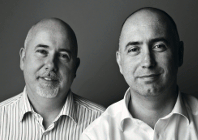
How two brothers went about creating a paper-based 3D printer
Default


